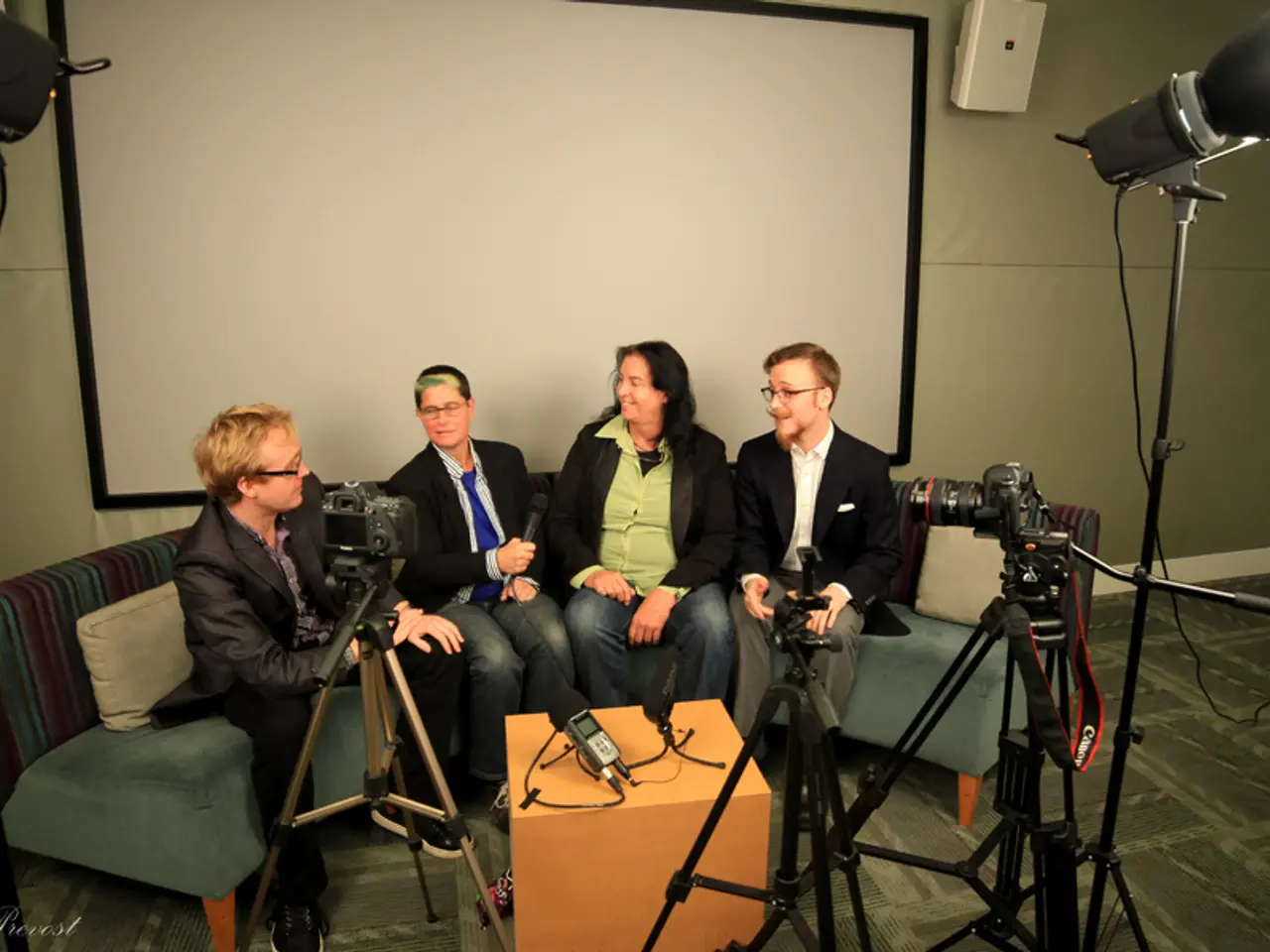Investigative Examination of Autistic Women and Transgender or Gender Non-conforming Individuals, as Identified by Themselves
A groundbreaking study, conducted by an autistic researcher, sheds light on the complex landscape of self-diagnosis among women and gender non-conforming individuals with autism. This research offers insights into the benefits, challenges, and significant implications for research and support services.
### The Empowering Benefits of Self-Diagnosis
Self-diagnosis can provide a sense of empowerment and identity clarity for many individuals who discover autism through self-reflection. This process can offer emotional relief, reduce confusion about lifelong difficulties, and foster a positive neurodiverse identity. Personal accounts highlight how self-diagnosis helps individuals understand their experiences, reducing feelings of alienation and mental distress often caused by misdiagnosis or lack of recognition.
Self-diagnosis also compensates for diagnostic gaps, as traditional screening methods have historically been based on male presentations, often missing the female and gender-diverse autism phenotype. Many autistic women and gender non-conforming people mask or camouflage their difficulties to fit gender norms and social expectations, making it easier for them to recognise traits that traditional screening might overlook.
Moreover, self-diagnosis connects individuals to autistic and LGBTQ+ communities, which are particularly relevant since autistic people show higher rates of gender variance and diverse gender identities compared to the general population. This connection can mitigate isolation and provide peer support.
### The Challenges of Self-Diagnosis
While self-diagnosis offers benefits, it also presents some challenges. Without clinical guidance, self-diagnosis may lead to confusion with other conditions or experiences. Some individuals might misattribute challenges to autism when other mental health or neurodevelopmental conditions are at play, complicating appropriate support access.
Another challenge is the lack of formal recognition. Self-diagnosed individuals may face barriers in obtaining accommodations, formal support, and healthcare services which require official diagnosis. This can limit their educational, workplace, and social support opportunities.
Lastly, self-diagnosed individuals sometimes encounter skepticism from healthcare providers, family, or communities, which can exacerbate stress and marginalization.
### Implications for Research and Support
The research highlights the need for gender-sensitive diagnostic tools and the incorporation of lived experiences of autistic women and gender non-conforming people in research and clinical guideline development. This is critical to ensure relevance, reduce stigma, and improve outcomes.
Furthermore, the intersection between autism and gender diversity requires nuanced understanding and support tailored to the unique challenges of being both autistic and gender diverse. Studies show autistic individuals are more likely to have diverse gender identities or gender variance, particularly those assigned female at birth.
Lastly, improving education of healthcare providers and the public about how autism presents across gender identities can facilitate earlier identification and more supportive environments in schools, workplaces, and communities.
In conclusion, self-diagnosis among women and gender non-conforming people fills critical gaps left by traditional diagnostic pathways but also presents challenges in validation and access to support. Research and clinical practices must evolve to embrace diverse autism presentations and intersecting identities to foster more inclusive diagnosis, care, and acceptance. This will improve mental health outcomes and quality of life for this historically underserved population.
Self-diagnosis, especially among women and gender non-conforming individuals with autism, can instill a sense of empowerment and clarity of identity by providing insight into their experiences and reducing feelings of alienation. However, it can potentially lead to confusion with other conditions if performed without clinical guidance.
Self-diagnosis helps bridge diagnostic gaps, as conventional screening methods often overlook the female and gender-diverse autism phenotype. It connects these individuals to communities that alleviate isolation, offering peer support.
Despite its advantages, self-diagnosis can complicate support access, as formal recognition is often required for accommodation, services, and healthcare. Additionally, self-diagnosed individuals may face skepticism from various quarters, worsening their marginalization.
The study underscores the necessity for gender-sensitive diagnostic tools and the inclusion of autistic women and gender non-conforming individuals in research and guideline development. This is essential for improving outcomes, reducing stigma, and ensuring relevance.
The intersection between autism and gender diversity necessitates a nuanced understanding and support tailored to their unique challenges. Autistic individuals are more likely to have diverse gender identities or gender variance, particularly those assigned female at birth.
Improving the education of healthcare providers and the public about how autism presents across gender identities can facilitate earlier identification and more supportive environments. This will improve mental health outcomes and quality of life for this underrepresented group.
Research and clinical practices must evolve to embrace diverse autism presentations and intersecting identities for more inclusive diagnosis, care, and acceptance. This focuses on mental health, health-and-wellness, education, and self-development to foster better mental health outcomes.
The psychology community should collaborate with education institutions to create programs that promote diversity and inclusion in diagnosis, care, and assessment. This collaboration must acknowledge and address the educational disparities faced by autistic women and gender non-conforming individuals.
Incorporating the perspectives of autistic women and gender non-conforming individuals in research and policy-making is crucial for promoting mental health, improving public understanding, and enhancing the overall quality of life for this ever-growing community.




